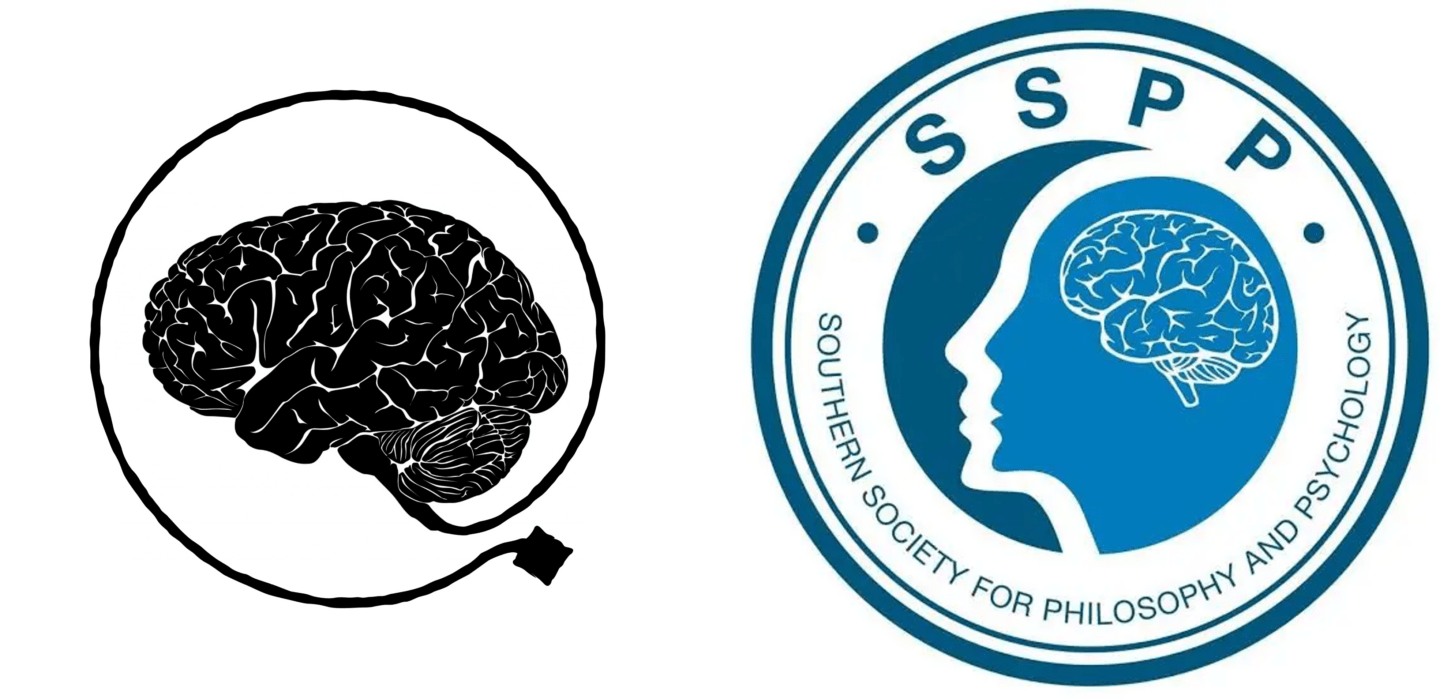Humans see faces as beautiful: The role of superadditive mechanisms in determining visual content.
Selina Guter, MIT
Our conscious visual experience presents us with various features of objects: among others, their shape, color, and size. But what about aesthetic properties, like beauty? My paper argues that at least one kind of beauty – facial beauty – is represented in conscious perception. This means that humans see more than just the shape or texture of faces; we see their beauty, too.
If any aesthetic property is presented to us in visual experience, facial beauty is certainly it. A body of empirical evidence suggests that the human visual system is especially sensitive to the presence of faces that are judged to be beautiful. Just like (say) color or size, facial beauty can be detected extremely quickly (Olson & Marshuetz, 2005). Facial beauty impressions also generate repulsive adaptation aftereffects (Kramer & Pustelnik, 2021; Pegors et al., 2015), which are an indicator of perceptual processing (Block, 2023). Beyond all this, facial beauty is unambiguously, strikingly presented to us in experience (read any romance novel). In other words, facial beauty smells and barks like a property presented to us conscious perception. But is it truly?
Psychophysical studies certainly establish that our visual system is sensitive to the presence of facial beauty. However, this sensitivity is not yet proof that beauty is seen. Instead, we might be able to explain away this sensitivity to facial beauty as a perception of more basic (“low-level”) properties that are correlated with facial beauty. For example, we might only see properties such as facial symmetry, or an even skin texture. The categorization as a beautiful face is then merely postperceptual. This low-level challenge is discussed by philosophers (Burge, 2014; Siegel & Byrne, 2017; Burnston, 2023), but it also pops up in non-philosophical literature (Webster & MacLeod, 2011; Xu et al., 2008). My paper addresses this challenge and resolves it in favor of the idea that beauty is indeed part of conscious perception.
I address the low-level challenge by showing that it has the danger of overgeneralizing. The idea is this: Even very basic properties – like motion or shape – can be broken down into more basic constituents, such as sequences of still images (for motion) or sets of lines (for shape). But just because these properties are composed of even more basic ones should not lead us to conclude that those even more basic constituents are all we see. Instead, we see motion and shape.
This idea is not just supported by philosophical intuition; we have empirical evidence for it. For example, akinetopsia strongly suggests that seeing motion goes beyond seeing sets of still images. Akinetopsia is a disorder in which subjects are unable to perceive object motion, but retain the ability to perceive still images of objects as they travel through space. Akinetopsia goes along with functional deficits and a radically altered experience of the world (Cooper et al., 2012). This demonstrates that seeing motion goes beyond perception of motion’s basic constituents. Simply put, it’s not enough to put all the necessary motion-ingredients in the pot – you also have to cook them. A similar story can be told about seeing shapes. Consider a triangle composed of dotted lines. We humans cannot help but see the triangle, but the same is not true for other species. Baboons (Fagot & Barbet, 2006) and pigeons (Vallortigara, 2006) struggle, and seem in some cases unable, to register global shapes (the triangle) over their local constituents (the dots comprising it). So while introspection may lead us to believe that seeing the triangle is nothing beyond seeing the dots, this is not true. The visual system has to do some extra cooking to get us all the way to shape perception, even though to us it feels effortless.
My paper gives a characterization of the extra steps involved in shape and motion perception: I argue they rely on what I call superadditive mechanisms, or SA-mechanisms for short. By definition, SA-mechanisms represent features that cannot be reduced to (sets of) more basic constituents, even if we clearly also have visual experience of those constituents themselves. I give some key empirical markers of superadditive mechanisms, which include a certain degree of automaticity as well as functional tuning. Roughly speaking, functionally tuned mechanisms disregard some differences in basic constituents while emphasizing others in order to perform a particular function. A great example is word perception: The so-called ‘visual word form area’ (VWFA) cares greatly about the minute shape differences between “b” and “6” while disregarding the greater differences between “G” and “g” (Cohen & Dehaene, 2004). This tuning allows the VWFA to fulfil its function, i.e., to detect words.
I use this idea of superadditive mechanisms to argue that facial beauty impressions also require more than just seeing beauty’s basic ingredients. For starters, we know that face perception relies on face-specialized mechanisms in the brain (Kanwisher & Yovel, 2006). Moreover, there is evidence that these face-specific areas do more for us than just help us tell apart faces of different people. They also exhibit functional tuning towards face-properties that go beyond face identity, including facial beauty. One piece of evidence comes from studies on congenital face agnosia, which is an innate inability to tell a person’s identity from their face. Rezlescu et al. (2014) found that some agnosics have unusual ratings of facial attractiveness, while others do not. This suggests that there is a separate mechanism within face-specific processors which are specifically tasked with detecting facial beauty.
I conclude that facial beauty representations require more than just basic, domain-general ingredients like color, shape, and so on. In the last part of my paper, I argue that other face-specific features, like facial symmetry or averageness, cannot explain all the variations in beauty-judgments. In light of this, we should infer that facial beauty is itself seen – not just inferred on the basis of some other (basic or face-specific) property that is perceived.
Long story, romantic conclusion: you really do see your partner as beautiful!
Bibliography
Block. (2023). The border between seeing and thinking. Oxford University Press.
Burge, T. (2014). Reply to Block: Adaptation and the upper border of perception. Philosophy and Phenomenological Research, 89(3), 573–583.
Burnston, D. C. (2023). How to think about higher‐level perceptual contents. Mind & Language, 38(5), 1166–1186. https://doi.org/10.1111/mila.12446
Cohen, L., & Dehaene, S. (2004). Specialization within the ventral stream: The case for the visual word form area. NeuroImage, 22(1), 466–476. https://doi.org/10.1016/j.neuroimage.2003.12.049
Cooper, S. A., Joshi, A. C., Seenan, P. J., Hadley, D. M., Muir, K. W., Leigh, R. J., & Metcalfe, R. A. (2012). Akinetopsia: Acute presentation and evidence for persisting defects in motion vision. Journal of Neurology, Neurosurgery & Psychiatry, 83(2), 229–230. https://doi.org/10.1136/jnnp.2010.223727
Fagot, J., & Barbet, I. (2006). Grouping and segmentation of visual objects in baboons (Papio papio) and humans (Homo sapiens). Comparative Cognition: Experimental Explorations of Animal Intelligence, 15–28.
Kanwisher, N., & Yovel, G. (2006). The fusiform face area: A cortical region specialized for the perception of faces. Philosophical Transactions of the Royal Society B: Biological Sciences, 361(1476), 2109–2128.
Kramer, R. S. S., & Pustelnik, L. R. (2021). Sequential effects in facial attractiveness judgments: Separating perceptual and response biases. Visual Cognition, 29(10), 679–688. https://doi.org/10.1080/13506285.2021.1995558
Olson, I. R., & Marshuetz, C. (2005). Facial Attractiveness Is Appraised in a Glance. Emotion, 5(4), 498–502. https://doi.org/10.1037/1528-3542.5.4.498
Pegors, T. K., Mattar, M. G., Bryan, P. B., & Epstein, R. A. (2015). Simultaneous perceptual and response biases on sequential face attractiveness judgments. Journal of Experimental Psychology: General, 144(3), 664–673. https://doi.org/10.1037/xge0000069
Rezlescu, C., Susilo, T., Barton, J. J., & Duchaine, B. (2014). Normal social evaluations of faces in acquired prosopagnosia. Cortex, 50, 200–203.
Siegel, S., & Byrne, A. (2017). Rich or thin?
Vallortigara, G. (2006). The cognitive chicken: Visual and spatial cognition in a nonmammalian brain. Comparative Cognition: Experimental Explorations of Animal Intelligence, 53–70.
Webster, M. A., & MacLeod, D. I. A. (2011). Visual adaptation and face perception. Philosophical Transactions of the Royal Society B: Biological Sciences, 366(1571), 1702–1725. https://doi.org/10.1098/rstb.2010.0360
Xu, H., Dayan, P., Lipkin, R. M., & Qian, N. (2008). Adaptation across the Cortical Hierarchy: Low-Level Curve Adaptation Affects High-Level Facial-Expression Judgments. The Journal of Neuroscience, 28(13), 3374–3383. https://doi.org/10.1523/JNEUROSCI.0182-08.2008

